#Studying Foreign Languages
Text
Great Options For Studying Foreign Languages Over The Internet.
Great Options For Studying Foreign Languages Over The Internet.
Nothing is as fun as learning a new language. Doing so allows you to connect with people from all over the world who share your interests. And, in today’s increasingly globalized society, being bilingual or multilingual can give you a severe leg up regarding job opportunities.
But learning a new language isn’t always easy. Finding the time and resources to attend classes or immerse yourself in a…

View On WordPress
0 notes
Text


(11/30) Recently I explained the concept of dépaysé(e), which literally translates to “de-countried”. Before I learned this word I could never eloquently describe why it always felt so off to be back in Ireland, and how I tend to feel a bit lost and foreign there despite being Irish. It can also be used in a positive context though! You could describe a holiday being great bcs everything felt so different, j’ai été dépaysé(e) ☕️
#I still love Ireland & it’s still my home ! But after living my entire adult life in France it feels so different than before I moved 😅#studyblr#French#french langblr#language learning#language studyblr#dark academia#light academia#30dop#30nym#Langblr#foreign languages#language study
760 notes
·
View notes
Text
어학
[eo·hak]
(noun) linguistics · (foreign) language studies · (act of) studying foreign languages
0 notes
Text
📺 words & expressions i have learned from french shows, movies, & tiktoks

c’est pas grave - it’s okay / it’s no big deal
(ne) t’inquiète (pas) - don’t worry
qu’est-ce que tu fais là ? - what are you doing here?
tu me manques - i miss you
on y va - let’s go
bien sûr - of course
j’suis là - i’m here
je vous en prie - you’re welcome (formal)
mytho - liar
ouais - yeah
un truc - something
voilà - there it is, that’s right, exactly, there you go
oh là là - wow, oh my god
bof - so-so, whatever
hein - the french “huh” or “eh”
ben / bah - well… / uhh…
s’il te plaît ➭ s’te plaît - please
félicitations - congratulations
un mec - a guy (slang)
une meuf - a girl (slang)
#in progress#séries#french#french language#frenchblr#french langblr#french learning#langblr#language learning#study french#foreign languages#french vocab#netflix#série tv#série télévisée#série netflix#francais#français#france#learning french#french culture#french vocabulary#film#cinéma#self study#french grammar#vocabulaire
1K notes
·
View notes
Text
Free online courses about Ukraine
Basics of the Ukrainian Language and Culture - https://www.open.edu/openlearn/languages/introduction-ukrainian-language-and-culture/
Ukraine: History, Culture, and Identities; this course is available in English, French, Italian, and Norwegian on Coursera: https://ui.org.ua/en/sectors-en/the-first-online-course-about-ukraine-in-english/
The Making of Modern Ukraine with Timothy Snyder: https://www.coursera.org/learn/the-making-of-modern-ukraine
Crimea: History and People on Udemy: https://www.udemy.com/course/crimea-history-and-people/

#ukrainian language#ukrainian#ukrainian101#ukrainian lesson#learning languages#language learning#ua lang#ukraine#langblr#slavic languages#learnsomethingneweveryday#learning#self studying#polyglot#Language blog#foreign languages#learnukrainian#learn ukrainian#free resources for language learners#free courses#language courses#slavic language courses#eastern european languages#eastern european#Ukraine
269 notes
·
View notes
Text
pov: you study languages 💌
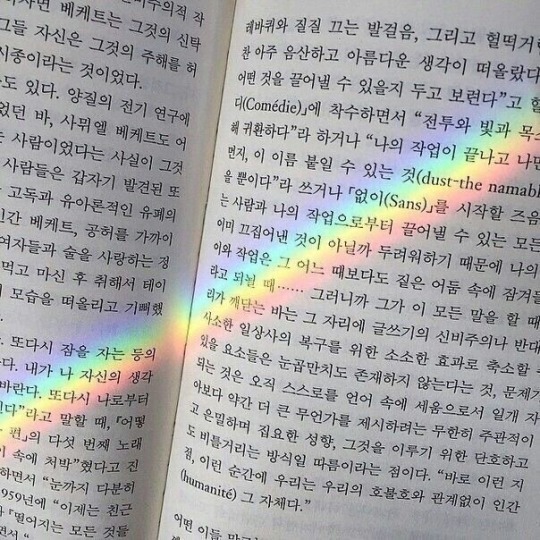



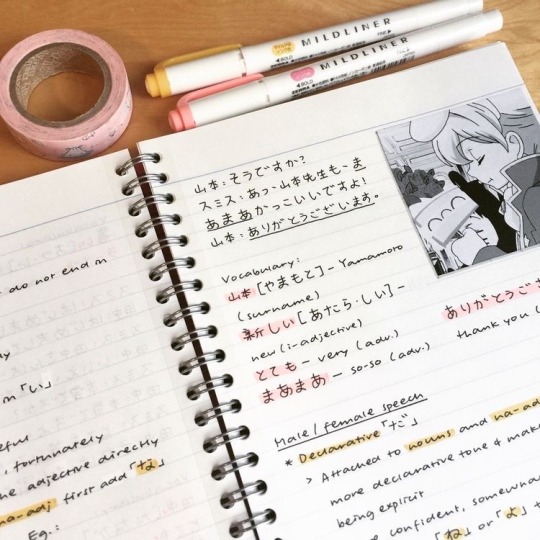

#studyblr#langblr#languages#study motivation#studyspo#polyglot#studying#study inspiration#language study#study languages#multilingual#study mood#study mood board#studyblr community#study inspo#foreign languages#studying languages
485 notes
·
View notes
Photo


April 2, 2023 |
The oral exams are getting closer and closer. I am still in the process of summarizing my political didactics seminar.
#MYPOSTING#studyblr#educhums#study inspo#study#studying#teaching#referendariat#lehramt#education major#political science#english as a foreign language
1K notes
·
View notes
Text
Spanish Media/Input Recommendations?
Can you guys comment me some good media/input recommendations for someone learning Mexican/Spain Spanish? I' talking about any and all that you guys find interesting, whether you learned Spanish on your own or it's your native language!
Books
Podcasts
Tv Shows
Movies
Youtube channels
Songs/Musical Artists
Favorite Spanish teachers/tutors on Italki
Literally anything!
Thank you guys <3
#spanish studyblr#spanish langblr#spanish learning#spanish language#spanish#langblr#langblog#language tips#language learning#foreign languages#languages#language studyblr#language study#language goals#learn spanish#italki#spanish podcast#spanish books#university student#college student#español#mexican spanish#student life#student#college studyblr#college studyspo#language resources#language blog#languageblr#language learning tips
92 notes
·
View notes
Text



learning languages study guide
daily:
♡ vocabulary and grammar practice
♡ lessons (i have four lessons per week at school. if you don't already take lessons, look into free language courses on alison, coursera or 101 languages)
once per week:
♡ translate a short text (i like to translate my journal entries)
one per fortnight/month:
♡ watch a movie in your target language, preferably animated movies as the language used is easier. you can watch with subtitles
additionally:
♡ talk to yourself; your friends; your pets in your target language
♡ text with someone in your target language
♡ repeat what you hear (in a podcast, lesson or movie)
luck with your language learning❤️
(images are from pinterest)
#elonomh#elonomhblog#student#student life#that girl#academia#chaotic academia#productivity#becoming that girl#study blog#language learning#langblr#learning languages#foreign languages#languages#language resources#study time#study hard#study aesthetic#study motivation#studying#100 days of studying#studyspo#study#study community#study space#study tips#study notes#study inspo#study with me
75 notes
·
View notes
Text
Important PSA: Do not ask linguists how many languages they speak. Linguistics is the scientific study of language, investigating things such as (but not limited to): how language can be modeled as a complex logic system; the cognitive processes and neurological structures that support the acquisition, storage, and usage of language; the biological and acoustic mechanisms involved in the production/perception of language; how language influences society and how society influences language.
Other things linguists do: work with communities to document or revitalize dying languages; develop dictionaries; work on language modeling software; consult for copyright litigation; reconstruct dead languages.
Really lucky linguists get hired by Hollywood to create fictional languages for sci-fi and fantasy blockbusters.
What linguists do not do: spend all day learning foreign languages. (Alas, if you are a linguist who enjoys learning foreign languages, you must do it in your free time, not during work hours.)
Also! Another important PSA: Any linguist who has learned, like, anything about language, WILL NOT JUDGE YOUR GRAMMAR! Do NOT apologize to a linguist for how you speak. Remember: no dialect is "more correct" than another. There is literally no objective criteria with which you can compare two languages or dialects and decide one is "better" than the other. If you are communicating successfully, you're doing language right!
#linguistics#i don't spend all day learning foreign languages#i spend all day experimenting on infants#hashtag not judging your grammar#just studying how you acquire it#my soapbox
75 notes
·
View notes
Text
Pros of reading something (anything!) in a foreign language when none of your family members knows it: you don’t have to hide the thing you're reading when they walk behind you, you could be reading the most embarrassing stuff and no one will know!!!
#learning languages#langblr#ive been reading really cringy stuff lately#but my family doesnt know hebrewww#new reason to learn foreign languages: you can be as weird and cringy as you want and you will still look cool#because you're reading something they cant#are u reading the news or some random fic? are you catering to that specific hyperfixation or studying? who knows? certainly not them
69 notes
·
View notes
Text
How I read and enjoy books in my target language
Please note that I write about what works for me and share advice based on my own experiences. If you have a different opinion or if you use other methods, that's absolutely fine. Do whatever works for you.
Since some people asked me how I read books in my target languages, I would like to describe my way of reading in this post. I focus on reading for some time now and I'm very happy with my progress so far. This doesn't mean that I won't change a few things in the future (I'm constantly gaining experience and changing my learning style accordingly).
1. Choosing a book
Before I start reading, I have to choose an appropriate book, obviously. After trial and error I realized how important this step is. My ideal book is:
not too easy (I won't learn much)
not too difficult (if I can't follow at least the rough story I won't enjoy it)
interesting (motivation to read it)
I try to choose a book that is slightly above my level so that I can follow the story without looking up too many words but also learn new words. I don't need to understand everything, but I don't want to feel lost either. Balance is important.
2. Trying the first chapter
After choosing a book that seems to be appropriate, I try to read the first chapter (and sometimes the first two chapters, if they are short). I pay attention to things like:
Can I follow the story?
Is the story interesting?
Do I like the writing style?
If I can answer (most) questions like these with "yes", I continue reading the book.
Do I only understand single words or sentences here and there? Do I have no clue what happens? Then I put the book aside for now and choose an easier one. There's no shame in admitting that this book is too difficult at the moment. Deciding what I don't read is just as important as deciding what I read.
3. Reading
If the level of difficulty is okay, I start reading the book. In my experience, the first few chapters are always the hardest. I need time to get used to the writing style, the used vocabulary and the story.
In the case of the japanese version of Harry Potter, the beginning was difficult because of the writing style. But after two chapters, I began to enjoy the story and so I continued. That's why I always try to read at least the first chapter. A book that seems difficult in the beginning can be very enjoyable once I've read enough pages.
When I come across an interesting word or a sentence I like, I highlight it. I try to not highlight too much stuff, though. Two, maybe three words per page is usually my maximum. Enjoying the story is my number one priority. I can read several pages without highlighting anything, even though there are words I don't know. As long as I don't feel the strong urge to look up a word, I just continue reading.
In many cases I can understand words from context and learn them over time just by seeing them again and again. That's why I don't look up words immediately. I wait to see if they come up more often.
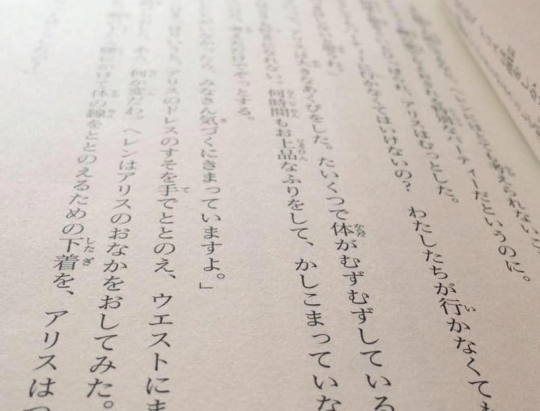
After I finished one chapter, I look up all highlighted words and read the passages that contain these words a second time. This way, I can connect the meaning with the full context. I don't try to memorize the word; I just try to understand it in this particular context before I continue.
Most of the time, I learn words unconsciously. If the book is easy enough, it's not so difficult to guess the meaning of certain words. While reading, I don't focus so much on words I don't know. I just focus on following the story. I may not always understand every detail, but as long as I can follow and enjoy the story, everything is fine. I learn so much by engaging with the language in a meaningful way and enjoying the content. Sometimes, I even forget that I am reading a book in a foreign language!
I have to add, that I'm already familiar with basic sentence patterns and that I have experience with reading books in my target languages. I finished the book "Remembering the Kanji" which makes it easier to guess the meaning of words. Knowing lots of kanji is a great advantage.
I have still a long way to go, of course, but this natural way of learning vocabulary may not work well at very early stages because you need a foundation first. After you are familiar with the dialogues and example sentences in your textbook, graded readers are a good choice in my opinion. Graded readers can make the transition from textbooks to easy books aimed at (young) native speakers easier.
Tip: One thing that helped me is to take a card, write down words I looked up and put this card into the book. When I read it a second time, I don't need to look them up again. Reading texts more than once can help to get more familiar with new words. Plus, writing helps me to remember words better. Reviewing them in their original context is much more enjoyable to me than reviewing them with flashcards. In the picture below you can see how my cards look like:

4. Enjoy!
I made enjoying books my number one priority. This is what helped me to make much more progress than before. All I need is enough reading material at the right level and a dictionary. As soon as I get absorbed in a book, I don't think about learning a language. I just want to enjoy the story. The more experience I gain, the better I become at understanding the language as a result. There's no need to force it or to hurry.
What I like about just enjoying a book and learning words naturally is that it's so simple. I don't necessarily need my computer, a certain software, add-ons, ... All I need is something I can read. After reading a chapter, I only look up a few words as I described above and that's it. Then, I often feel so motivated that I want to read more. I read much more than before because I enjoy it so much.
515 notes
·
View notes
Text
Analyzing Chinese Names: Syllables & Tones
It’s been a while since my last post about Chinese names. In one previous post, I wrote that I wanted to explore tones and syllable structure in Chinese names. And now here we are. I ended up shifting my focus a bit throughout the process, but I’m still excited to be sharing my results.
These questions/ideas guided this post:
Sometimes you don’t know how a name is written because you’ve only heard it or seen a transliteration. Setting aside the written language (Chinese characters), what syllables/sounds are most common?
I have read about naming conventions regarding tones. For example, using a mix of tones (instead of reusing the same tone) gives names a dynamic flow. So how are tones distributed in names?
Buckle up, everyone. This is gonna be a long one.
About the Data
I started with the data from my previous in-depth post about Chinese names. Like before, most names are from contestants on idol shows or members of idol groups. I added more names in this category and also some names of athletes (since for athletes it is also relatively easy to discern gender). In total, there were 4361 names (2340 female, 2021 male). Most names belong to individuals from Mainland China, but there are also names belonging to people from Taiwan, Hong Kong, Malaysia, and Singapore. See my past post for more details.
I had to do a lot of work to process the name data for this analysis. I will add some details towards the end of this post for those who are interested. I just want to note here that:
I did some work to account for tone sandhi for yi 一. As a result, you may see this character labeled as 1st, 2nd, or 4th tone.
I also applied tone change rules when there were multiple 3rd tones in a row (but not for surnames as it shouldn’t change there).
I had to correct for duoyinzi 多音字. Most of the time, it’s pretty clear which pronunciation is used, but there are some ambiguous cases.
I use standard Mainland pronunciation, not Taiwanese pronunciation. Characters like 薇 are pronounced differently in these locations.
I’m an imperfect human and probably didn’t catch everything. So keep that in mind.
Given Names (Overall)
First we will examine the overall results for all syllables across all given names to get a nice overview. Then we will dive into single-character given names vs. two-character given names.
Top Given Name Syllables (w/ Tones)

Pictured: Some of the most frequent characters for the top 11 syllables.
List format:
Syllable / count
Corresponding characters that occurred more than once
Yǔ / 263
宇 雨 羽 语 予 禹 瑀
Xīn / 229
欣 鑫 馨 心 昕 新 歆 芯 薪
Jiā / 216
佳 嘉 家 加 珈
Yì / 201
一 艺 奕 逸 亦 毅 懿 翊 义 易 翼 忆 意 译 轶 熠 羿 亿 薏
Zǐ / 139
子 梓 紫
Qí / 134
琪 琦 奇 祺 麒 淇 齐 棋 其 岐 崎
Wén / 116
文 雯 闻 纹
Jié / 112
杰 洁 婕 捷 颉 倢
Yù / 102
玉 钰 煜 昱 郁 裕 喻 谕 毓 育 誉
Jùn / 99
俊 峻 珺 骏 浚 竣
Yáng / 99
洋 阳 扬 杨 炀 旸
Top Given Name Syllables (w/o Tones)
List format:
Syllable / count
Corresponding characters that occurred more than once
Yu / 419
宇 雨 玉 羽 钰 语 瑜 予 妤 煜 禹 昱 郁 俞 渝 裕 于 喻 瑀 谕 余 娱 愚 毓 育 誉
Yi / 356
一 怡 艺 奕 仪 依 逸 亦 伊 毅 宜 懿 翊 义 祎 易 翼 苡 忆 意 译 轶 颐 乙 以 熠 羿 亿 倚 薏
Xin / 232
欣 鑫 馨 心 昕 新 歆 芯 薪 信
Jia / 217
佳 嘉 家 加 珈
Jun / 165
俊 君 峻 钧 军 珺 均 骏 浚 竣
Zi / 157
子 梓 紫 姿 兹
Qi / 151
琪 琦 奇 祺 绮 麒 启 淇 齐 棋 其 岐 崎
Hao / 141
豪 浩 昊 皓 灏 淏 濠
Wei / 139
伟 玮 威 维 薇 蔚 微 炜 唯 纬 葳 为 崴 巍 𬀩 苇 韦
Xiao / 136
晓 小 笑 筱 孝 潇 篠 箫 肖
Given Name Syllable Tones

List format:
Tone / count
2nd / 2729
1st / 1993
4th / 1885
3rd / 1167
Single-Character Given Names (单名)
There were 948 single-character names in total. That comes out to about 22% of all 4361 names.
Top Single-Character Given Names (w/ Tones)
List format:
Syllable / count
All corresponding characters
Xīn / 41
鑫 欣 昕 馨 新 心 锌
Yáng / 29
洋 扬 杨 阳 旸 炀
Yǔ / 20
宇 雨 禹 羽 瑀 语
Lì / 18
丽 立 莉 俐 栎 栗
Yì / 18
艺 奕 逸 忆 易 毅 燚 羿
Yuè / 18
悦 玥 越 月 粤 跃
Jié / 17
洁 杰 倢 婕 捷 颉
Hào / 16
浩 昊 淏 灏
Jìng / 14
静 婧 靓* 竞 靖
Qiàn / 14
倩 茜**
*Can be pronounced jìng or liàng. I went with jìng.
**Can be pronounced qiàn or xī. I went with qiàn.
Top Single-Character Given Names (w/o Tones)
List format:
Syllable / count
All corresponding characters
Xin / 41
鑫 欣 昕 馨 新 心 锌
Yu / 31
宇 雨 钰 煜 玉 瑜 禹 羽 昱 渝 瑀 语
Yang / 29
洋 扬 杨 阳 旸 炀
Yi / 23
艺 奕 怡 逸 一 忆 易 毅 燚 祎 羿
Wei / 22
伟 威 炜 维 蔚 薇 𬀩 玮
Hao / 19
浩 昊 豪 淏 灏
Jing / 19
静 晶 婧 靓* 璟 竞 菁 靖
Li / 19
丽 立 莉 俐 李 栎 栗
Ying / 19
颖 莹 影 滢 赢 瀛 盈
Yue / 18
悦 玥 越 月 粤 跃
*Can be pronounced jìng or liàng. I went with jìng.
Single-Character Name Tones

List format:
Tone / count
2nd / 308
4th / 264
1st / 253
3rd / 123
Full Name Tone Patterns for Single-Character Given Names

Look at the darker “stripes” for the 2nd tone. The 3rd tone’s low popularity also stood out to me.
List format:
Tone of surname, tone of given name / count
2nd, 2nd / 140
2nd, 1st / 127
2nd, 4th / 123
1st, 2nd / 80
1st, 4th / 73
1st, 1st / 68
2nd, 3rd / 52
4th, 2nd / 45
3rd, 2nd / 43
1st, 3rd / 39
3rd, 4th / 37
4th, 4th / 31
3rd, 1st / 29
4th, 1st / 29
4th, 3rd / 17
3rd, 3rd / 15
Two-Character Given Names (双名)
Now for two-character given names. There were 3413 total (about 78%). First I will look at these given names as a whole. Then I will separately examine the 1st syllable and 2nd syllable positions.
I was very interested to see the most common name going by sound and not characters. Living in the US, I often see transliterated Chinese names with no characters in sight. This effectively “merges” names that are distinct in Chinese. All I can do is guess what the characters (and thus tones) are.
Top Two-Character Given Names (w/ Tones)
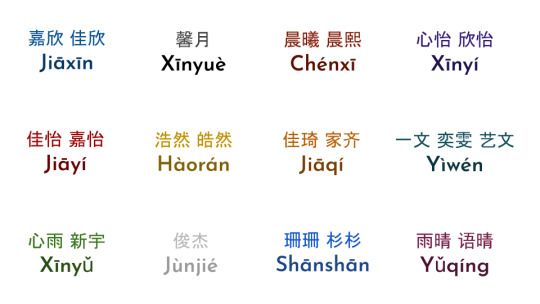
Pictured: Character combinations that occurred more than once for the top 12 two-character given names.
List format:
Given name / count
All corresponding character combinations
Jiāxīn / 17
嘉欣 佳欣 佳薪 佳鑫 嘉新 嘉歆 嘉馨
Jiāyí / 12
佳怡 嘉怡 佳仪 嘉仪 家仪 家怡
Xīnyǔ / 10
心雨 新宇 心语 欣宇 欣雨 鑫宇 馨予
Xīnyuè / 10
馨月 心玥 昕玥 欣悦 歆玥 馨悦 馨玥
Hàorán / 9
浩然 皓然
Jùnjié / 9
俊杰 俊洁
Chénxī / 8
晨曦 晨熙 晨晞 晨晰 晨溪
Jiāqí / 8
佳琦 家齐 佳琪 嘉琪 嘉祺 嘉齐
Shānshān / 8
珊珊 杉杉 姗姗
Xīnyí / 8
心怡 欣怡 心仪 鑫怡
Yìwén / 8
一文 奕雯 艺文 译文 逸文
Yǔqíng / 8
雨晴 语晴 宇晴 雨情
Top Two-Character Given Names (w/o Tones)
List format:
Given name / count
All corresponding character combinations
Jiaxin / 17
嘉欣 佳欣 佳薪 佳鑫 嘉新 嘉歆 嘉馨
Jiayi / 16
佳怡 嘉怡 佳仪 佳依 加一 嘉仪 嘉艺 嘉谊 家仪 家怡 家毅
Xinyu / 15
心雨 欣妤 新宇 心妤 心玉 心语 欣宇 欣雨 鑫宇 馨予
Junjie / 12
俊杰 军杰 俊洁 钧杰
Xiaoyu / 12
小雨 晓玉 晓钰 小钰 晓宇 晓瑜 晓雨 笑语
Yifan / 12
一凡 艺凡 一帆 一幡 一璠 依凡 屹繁 怡凡 薏帆
Xinyi / 10
心怡 欣怡 心仪 欣佚 鑫一 鑫怡
Xinyue / 10
馨月 心玥 昕玥 欣悦 歆玥 馨悦 馨玥
Yuqing / 10
雨晴 语晴 宇庆 宇晴 钰清 雨情
Two-Character Given Name Tones
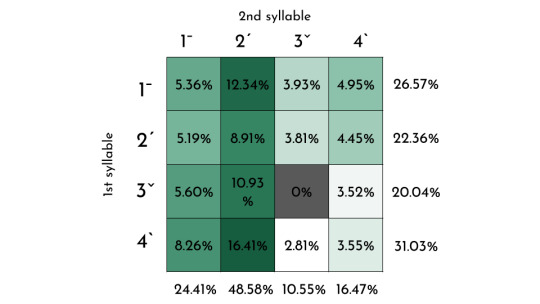
The grey square is due to the 3rd tone tone change rule.
List format:
Tone of given name 1st syllable, tone of given name 2nd syllable / count
4th, 2nd / 560
1st, 2nd / 421
3rd, 2nd / 373
2nd, 2nd / 304
4th, 1st / 282
3rd, 1st / 191
1st, 1st / 183
2nd, 1st / 177
1st, 4th / 169
2nd, 4th / 152
1st, 3rd / 134
2nd, 3rd / 130
4th, 4th / 121
3rd, 4th / 120
4th, 3rd / 96
Full Name Tone Patterns for Two-Character Given Names

Pictured: The top 10 full name tone patterns for two-character given names.
I found these results very interesting. As I mentioned earlier, I’ve read about how using certain sequences of tones creates a pleasant-sounding flow. I had some fun saying aloud names that fit these patterns and judging the dynamic ups-and-downs of how they flow.
List format:
Tone of surname, tone of given name 1st syllable, tone of given name 2nd syllable / count
2nd, 4th, 2nd / 273
2nd, 1st, 2nd / 179
2nd, 3rd, 2nd / 179
2nd, 4th, 1st / 138
1st, 4th, 2nd / 135
2nd, 2nd, 2nd / 129
1st, 3rd, 2nd / 98
2nd, 3rd, 1st / 95
2nd, 1st, 4th / 92
1st, 1st, 2nd / 89
These are only the top 10 patterns. See the bottom of the post for the full list.
Two-Character Given Names: First Syllable
Top First Syllables for Two-Character Given Names (w/ Tones)
List format:
Syllable / count
Corresponding characters that occurred more than once
Jiā / 171
佳 嘉 家 加 珈
Yì / 138
一 艺 奕 逸 亦 翊 易 义 懿 翼 译 亿 忆 毅 羿 薏 轶
Zǐ / 123
子 梓 紫
Yǔ / 115
雨 宇 语 羽 禹 予
Xīn / 95
欣 心 馨 鑫 新 昕 歆 薪 芯
Xiǎo / 79
晓 小 筱
Jùn / 69
俊 峻 珺 竣 骏
Sī / 63
思 斯
Yù / 53
玉 钰 煜 昱 郁 裕 喻 毓 育 誉
Mèng / 49
梦 孟
Top First Syllables for Two-Character Given Names (w/o Tones)
List format:
Syllable / count
Corresponding characters that occurred more than once
Yi / 201
一 艺 奕 怡 依 逸 亦 翊 伊 宜 易 苡 义 乙 以 懿 翼 译 亿 忆 毅 祎 羿 薏 轶
Yu / 188
雨 宇 语 玉 钰 羽 禹 煜 俞 昱 郁 于 渝 裕 予 喻 毓 瑜 育 誉
Jia / 171
佳 嘉 家 加 珈
Zi / 133
子 梓 紫 姿
Xiao / 118
晓 小 笑 孝 潇 筱
Xin / 98
欣 心 馨 鑫 新 昕 歆 信 薪 芯
Jun / 84
俊 峻 君 钧 军 珺 竣 骏
Jing / 67
静 婧 景 敬 靖 晶 京 竞
Zhi / 61
智 志 芷 之 治 知 祉
Si / 60
思 斯
First Syllable Tones for Two-Character Given Names
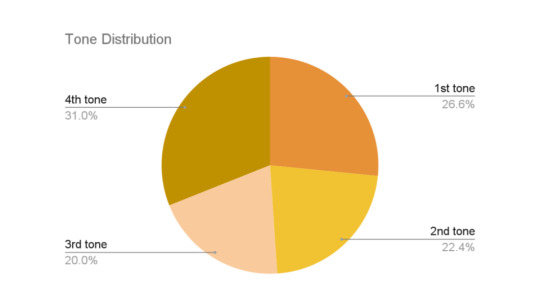
List format:
Tone / count
4th / 1059
1st / 907
2nd / 763
3rd / 684
Two-Character Given Names: Second Syllable
Top Second Syllables for Two-Character Given Names (w/ Tones)
List format:
Syllable / count
Corresponding characters that occurred more than once
Yǔ / 128
宇 雨 羽 予 语 瑀 禹
Qí / 100
琪 琦 祺 奇 淇 齐 棋 麒 岐
Xīn / 93
欣 鑫 馨 昕 心 新 歆 芯
Jié / 83
杰 洁 婕 捷
Wén / 68
文 雯
Yí / 63
怡 仪 宜 颐
Lín / 61
霖 琳 林 麟 淋
Tíng / 61
婷 廷 庭
Yuán / 59
源 元 媛 圆 园 缘 原
Yáng / 58
阳 洋 扬 杨 炀
Top Second Syllables for Two-Character Given Names (w/o Tones)
List format:
Syllable / count
Corresponding characters that occurred more than once
Yu / 200
宇 雨 玉 羽 瑜 妤 予 钰 语 昱 煜 谕 郁 余 瑀 禹
Yi / 132
怡 仪 一 毅 依 艺 逸 亦 伊 宜 懿 颐 义 奕 意 祎 熠 翼 轶
Qi / 105
琪 琦 祺 奇 淇 绮 齐 棋 麒 岐
Xin / 93
欣 鑫 馨 昕 心 新 歆 芯
Jie / 83
杰 洁 婕 捷
Wei / 75
伟 玮 薇 维 威 微 炜 蔚 葳 崴 纬
Hao / 74
豪 昊 浩 皓 濠
Jun / 72
君 俊 钧 峻 军 均 珺 骏
Wen / 68
文 雯
Yuan / 68
源 元 媛 圆 远 园 渊 缘 原
Second Syllable Tones for Two-Character Given Names

List format:
Tone / count
2nd / 1658
1st / 833
4th / 562
3rd / 360
Surnames
Because the majority of the population shares a relatively small number of surnames, I decided to only look at tones.
Surname Tones

List format:
Tone / count
2nd / 2047
1st / 1072
3rd / 640
4th / 602
Just take a look at the top 20 surnames in China. Clearly, the 2nd tone is dominating. There’s only one 4th tone surname!

Data Processing
I segmented the names so each character was alone. I just did this in Google Sheets, because that’s where I store the names I’ve gathered. Then I exported the data in CSV format.
I discarded names longer than 3 characters—because these are less common, I decided not to address them to make things easier for myself.
I used the pinyin library for Python to obtain pinyin for each character. I used the numerical format (ie. “ni3”) so that I could easily obtain the syllable w/o tone, the syllable w/ tone, and the tone. I also utilized pandas and numpy. This was done in Google Colabs. I made the unfortunate mistake of not commenting my code, and I wrote it a while ago, so I now I have no idea what is going on (whoops).
Next I dumped this data into a tibble in R for the real analysis.
For as many 多音字 as I could identify, I had to check and potentially fix the pinyin transcription. For example, I had to make sure that 曾 was going to zeng1, not ceng2. Honestly, I’m sure I missed something, but this was so, so tedious. This is also the step where I accounted for the 3rd tone tone change and yi 一 tone change rules.
I used a Python script to convert the toneless pinyin to my own syllable notation system. This was tricky to figure out, but fortunately I was able to use some code I already had from a project I was involved in during college.
I added the syllable info to my giant tibble in R. Because everything was separated into surname, given name 1st character, and given name 2nd character, I also had to create some new columns to combine information to get information for whole given names and full names.
Then it was basically a lot of pipes. Here’s an example:
names %>%
filter(nchar(names$name) > 2) %>%
group_by(given_struc) %>%
summarise(count = n()) %>%
arrange(desc(count)) %>%
view()
Bonus Lists
There were some other things I was curious about but felt didn’t have a place in the main body of this post.
I wanted to see which syllables were represented by the most unique characters in my dataset. If the number of unique characters is high, that’s a sign that I would probably have trouble guessing which character someone’s name contains.
I was also curious about open vs. closed syllables and closed syllables ending in /n/ vs. /ŋ/. For instance, take a pair of names like Yixin and Xinyi or Xinling and Lingxin. These names consist of the same syllables in a different order. I wanted to know which order is more common.
Syllables with the Most Unique Characters (w/ Tones)
List format:
Syllable / count
All corresponding characters
Yì / 27
一 艺 奕 逸 亦 毅 懿 翊 义 易 翼 忆 意 译 轶 熠 羿 亿 薏 佚 佾 埸 屹 异 弋 怿 燚 翌
Qí / 15
琪 琦 奇 祺 麒 淇 齐 棋 其 岐 崎 圻 祁 祈 骐
Yú / 14
瑜 妤 俞 渝 于 余 娱 愚 宇*** 愉 榆 舆 雨*** 鱼
Yù / 14
玉 钰 煜 昱 郁 裕 喻 谕 毓 育 誉 寓 浴 芋
Xīn / 12
欣 鑫 馨 心 昕 新 歆 芯 薪 妡 忻 锌
Yuán / 12
源 媛 元 园 圆 缘 原 嫄 沅 湲 芫 袁
Líng / 11
玲 灵 凌 翎 绫 伶 羚 铃 龄 苓 陵
Xī / 11
希 熙 曦 溪 晞 惜 熹 兮 浠 晰 西
Hóng / 9
宏 红 弘 鸿 泓 虹 洪 闳 汯
Lì / 9
丽 莉 立 力 俐 利 俪 栎 栗
Zhēn / 9
珍 真 臻 蓁 祯 桢 榛 甄 贞
***3rd tone character that is pronounced as 2nd tone due to appearing before another 3rd tone character.
Syllables with the Most Unique Characters (w/o Tones)
List format:
Syllable / count
All corresponding characters
Yi / 45
一 怡 艺 奕 仪 依 逸 亦 伊 毅 宜 懿 翊 义 祎 易 翼 苡 忆 意 译 轶 颐 乙 以 熠 羿 亿 倚 薏 佚 佾 埸 壹 夷 屹 异 弋 怿 沂 洢 燚 翌 谊 铱
Yu / 33
宇 雨 玉 羽 钰 语 瑜 予 妤 煜 禹 昱 郁 俞 渝 裕 于 喻 瑀 谕 余 娱 愚 毓 育 誉 寓 愉 榆 浴 舆 芋 鱼
Qi / 20
琪 琦 奇 祺 绮 麒 启 淇 齐 棋 其 岐 崎 圻 期 柒 栖 祁 祈 骐
Wei / 20
伟 玮 威 维 薇 蔚 微 炜 唯 纬 葳 为 崴 巍 𬀩 苇 韦 卫 惟 未
Yan / 19
妍 言 燕 彦 艳 岩 延 谚 嫣 琰 雁 晏 研 颜 砚 衍 严 炎 焱
Yuan / 16
源 媛 元 远 园 圆 渊 缘 原 嫄 愿 沅 湲 芫 苑 袁
Xi / 16
希 熙 曦 汐 溪 晞 玺 喜 惜 熹 兮 浠 习 晰 禧 西
Xiao / 15
小 笑 筱 孝 潇 篠 箫 肖 宵 效 枭 校 萧 霄
Yun / 15
云 芸 韵 昀 赟 允 匀 沄 筠 韫 妘 澐 蕰 蕴 运
Zhen / 15
振 珍 真 臻 蓁 祯 震 镇 朕 桢 榛 甄 贞 轸 圳
Two-Character Given Name Syllable Structures
This is the top 10 out of 14 (the bottom 4 were very rare).
List format:
Structure of given name 1st syllable, structure of given name 2nd syllable — example / count
Open, open — ex: Jiayi / 821
Open, closed-n — ex: Yijin / 701
Open, closed-ng — ex: Yijing / 468
Closed-n, open — ex: Jinyi / 450
Closed-ng, open — ex: Jingyi / 308
Closed-n, closed-n — ex: Jinyan / 206
Closed-ng, closed-n — ex: Jingyan / 157
Closed-n, closed-ng — ex: Jinyang / 141
Closed-ng, closed-ng — ex: Jingyang / 139
Open, closed-er — ex: Xue'er / 14
Full Name Syllable Structures for Two-Character Given Names
This is the top 29 out of 36 (the bottom 7 were very rare).
List format:
Structure of surname syllable, structure of given name 1st syllable, structure of given name 2nd syllable — example / count
Open, open, open— ex: Li Jiayi / 370
Open, open, closed-n— ex: Li Yijin / 336
Closed-ng, open, open— ex: Wang Jiayi / 273
Open, open, closed-ng— ex: Li Yijing / 228
Open, closed-n, open— ex: Li Jinyi / 225
Closed-ng, open, closed-n— ex: Wang Yijin / 223
Closed-n, open, open— ex: Chen Jiayi / 178
Closed-ng, closed-n, open— ex: Wang Jinyi / 165
Open, closed-ng, open— ex: Li Jingyi / 151
Closed-ng, open, closed-ng— ex: Wang Yijing / 146
Closed-n, open, closed-n— ex: Chen Yijin / 142
Open, closed-n, closed-n— ex: Li Jinyan / 104
Closed-ng, closed-ng, open— ex: Wang Jingyi / 97
Closed-n, open, closed-ng— ex: Chen Yijing / 94
Open, closed-ng, closed-n— ex: Li Jingyan / 86
Open, closed-ng, closed-ng— ex: Li Jingyang / 75
Open, closed-n, closed-ng— ex: Li Jinyang / 66
Closed-ng, closed-n, closed-n— ex: Wang Jinyan / 62
Closed-n, closed-n, open— ex: Chen Jinyi / 60
Closed-n, closed-ng, open— ex: Chen Jingyi / 60
Closed-ng, closed-n, closed-ng— ex: Wang Jinyang / 45
Closed-ng, closed-ng, closed-ng— ex: Wang Jingyang / 45
Closed-ng, closed-ng, closed-n— ex: Wang Jingyan / 43
Closed-n, closed-n, closed-n— ex: Chen Jinyan / 40
Closed-n, closed-n, closed-ng— ex: Chen Jinyang / 30
Closed-n, closed-ng, closed-n— ex: Chen Jingyan / 28
Closed-n, closed-ng, closed-ng— ex: Chen Jingyang / 19
Open, open, closed-er— ex: Li Xue'er / 8
Closed-ng, open, closed-er— ex: Wang Xue'er / 4
Extended List(s)
Full Name Tone Patterns for Two-Character Given Names
2nd, 4th, 2nd / 273
2nd, 1st, 2nd / 179
2nd, 3rd, 2nd / 179
2nd, 4th, 1st / 138
1st, 4th, 2nd / 135
2nd, 2nd, 2nd / 129
1st, 3rd, 2nd / 98
2nd, 3rd, 1st / 95
2nd, 1st, 4th / 92
1st, 1st, 2nd / 89
2nd, 1st, 1st / 88
2nd, 2nd, 1st / 84
3rd, 1st, 2nd / 83
3rd, 4th, 2nd / 81
1st, 2nd, 2nd / 73
4th, 4th, 2nd / 71
4th, 1st, 2nd / 70
1st, 4th, 1st / 69
2nd, 3rd, 4th / 68
2nd, 2nd, 3rd / 64
2nd, 1st, 3rd / 59
3rd, 2nd, 2nd / 59
2nd, 2nd, 4th / 56
4th, 3rd, 2nd / 56
2nd, 4th, 4th / 54
2nd, 4th, 3rd / 47
1st, 2nd, 4th / 43
4th, 2nd, 2nd / 43
1st, 1st, 3rd / 42
4th, 4th, 1st / 42
1st, 3rd, 1st / 41
3rd, 3rd, 2nd / 40
1st, 1st, 1st / 35
1st, 2nd, 1st / 35
1st, 2nd, 3rd / 35
1st, 1st, 4th / 34
4th, 1st, 1st / 34
3rd, 4th, 1st / 33
1st, 4th, 4th / 31
3rd, 2nd, 1st / 30
1st, 3rd, 4th / 29
4th, 2nd, 1st / 28
4th, 3rd, 1st / 28
3rd, 2nd, 4th / 27
3rd, 3rd, 1st / 27
3rd, 1st, 1st / 26
4th, 2nd, 4th / 26
1st, 4th, 3rd / 23
3rd, 1st, 4th / 23
3rd, 2nd, 3rd / 21
3rd, 4th, 4th / 20
4th, 1st, 4th / 20
4th, 1st, 3rd / 19
3rd, 4th, 3rd / 18
4th, 4th, 4th / 16
3rd, 1st, 3rd / 14
3rd, 3rd, 4th / 14
4th, 2nd, 3rd / 10
4th, 3rd, 4th / 9
4th, 4th, 3rd / 8
If you made it to the end, I am seriously impressed by your dedication. Thanks for checking out my nerdy ramblings about Chinese names! Don’t forget to check out my past posts on this topic for more. I hope they will help demystify Chinese names and make learning about Chinese names less intimidating.
A Closer Look at Chinese Names
Reading Chinese Names: Female Names
Reading Chinese Names: Male Names
#chinese name#chinese names#chinese#mandarin#mandarin chinese#chinese language#chinese langblr#chinese studyblr#mandarin langblr#mandarin studyblr#language learning#language stuff#learning languages#language study#langblr#studyblr#languages#languageblr#polyglot#foreign languages#study chinese#learn chinese#study mandarin#learn mandarin#studying mandarin#learning mandarin#studying chinese#learning chinese#language blog
325 notes
·
View notes
Text
Vocabulario de los postres 🍦

El pastel, la torta - cake
El bizcocho - spongecake
La torta, el pay - pie
La magdalena - cupcake
El flan - flan
La magdalena, el pastelito, el cupcake - cupcake
La esponjita, el bombón (mex.) - marshmallow
El helado - ice cream
La paleta de hielo - popsicle
El bastón de caramelo - candy cane
El chicle - gum
La galleta - cookie
El batido, La malteada (LatAm.), el licuado (LatAm.) - milkshake
La paleta (LatAm.), el piruela (Spain) - lollipop
La gominola - gummy candy
La rosquilla, el dónut, la dona (LatAm.) - donut
Sabores/tipos - flavors/types
de chocolate - chocolate
de pecana - pecan
de fresa - strawberry
de vainilla - vanilla
de limón - lemon
de queso - cheese
de manzana - apple
de calabaza - pumpkin
#langblr#language#learn languages#spanish#study#learn spanish#spanish langblr#spanish vocab#spanish vocabulary#language learning#spanish language#studying#foreign languages#languages#linguistics#vocabulario#idiomas
363 notes
·
View notes
Text
“When the violin repeats what the piano has just played, it cannot make the same sounds and it can only approximate the same chords. It can, however, make recognizably the same "music," the same air. But it can do so only when it is as faithful to the self-logic of the violin as it is to the self-logic of the piano.
Language too is an instrument, and each language has its own logic. I believe that the process of rendering from language to language is better conceived as a "transposition" than as a "Translation," for "translation" implies a series of word-for-word equivalents that do not exist across language boundaries any more than piano sounds exist in the violin.”
john ciardi’s introduction to his translation of dante’s inferno <3
#translation#translated literature#literary translation#translation studies#translator#literature#literary#inferno#lingblr#language learning#language#foreign languages#langblr
381 notes
·
View notes
Text
Castles of Ukraine

Бердичівський замок

Дубенський замок

Золочівський замок

Замок Любарта
Vocabulary:
Замок - zamok - castle
Королівський замок - koroleevskyi zamok - royal castle
Королівська сім'я - koroleevska seemia - royal family
Принц - prynts - prince
Принцеса - pryntsessa - princess
Король - korol - king
Королева - koroleva - queen
#ukrainian language#ukrainian#ukrainian101#ukrainian lesson#learning languages#language learning#ua lang#ukraine#langblr#slavic languages#learnsomethingneweveryday#learning#self studying#polyglot#Language blog#foreign languages#learnukrainian#learn ukrainian#ukrainian culture#Ukrainian castles#royal vocabulary
59 notes
·
View notes